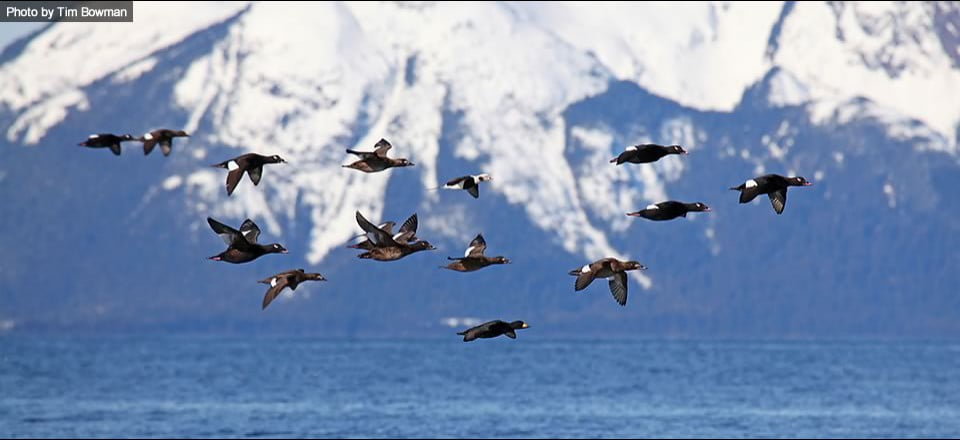Aerial Detection Study in Puget Sound

Project Number: 136
Year Funded: 2012
Lead Institution(s): Washington Department of Fish and Wildlife, Canadian Wildlife Service
Project Lead: Joe Evenson
Collaborator(s): Heather Tschaekofske, Bryan Murphie, Tom Cyra, Don Kraege (WDFW)
Location: Washington State
Focal Species: All Sea Ducks, Bufflehead (Bucephala albeola), Barrow’s Goldeneye (Bucephala islandica), Common Goldeneye (Bucephala clangula), Harlequin Duck (Histrionicus histrionicus), Long-tailed Duck (Clangula hyemalis), Common Eider (Somateria mollissima), King Eider (Somateria spectabilis), Spectacled Eider (Somateria fischeri), Steller’s Eider (Polysticta stelleri), Common Merganser (Mergus merganser), Hooded Merganser (Lophodytes cucullatus), Red-breasted Merganser (Mergus serrator), Black Scoter (Melanitta americana), Surf Scoter (Melanitta perspicillata), White-winged Scoter (Melanitta delgandi)
Project Description: The primary goal of this project was to investigate the utility of digital imaging equipment in assessing the detectability of sea ducks during aerial surveys. The project included three phases. Phase 1 was implemented during winter 2011 with the goal of testing various imaging equipment on board the survey aircraft (de Havilland DHC-2) to evaluate their effectiveness in being able to document sea ducks along a 50 m transect strip. Applying lessons learned in phase 1, we implemented phase 2 in November 2011 and March 2012 by conducting aerial survey flights over 8 survey days. Phase 3, digital image processing and data analysis, was initiated in November 2012. This project was expanded and continued as SDJV Project 156: Evaluating Sea Duck Detectability in the Puget Sound Winter Ambient Monitoring Program.
Project Reports:
